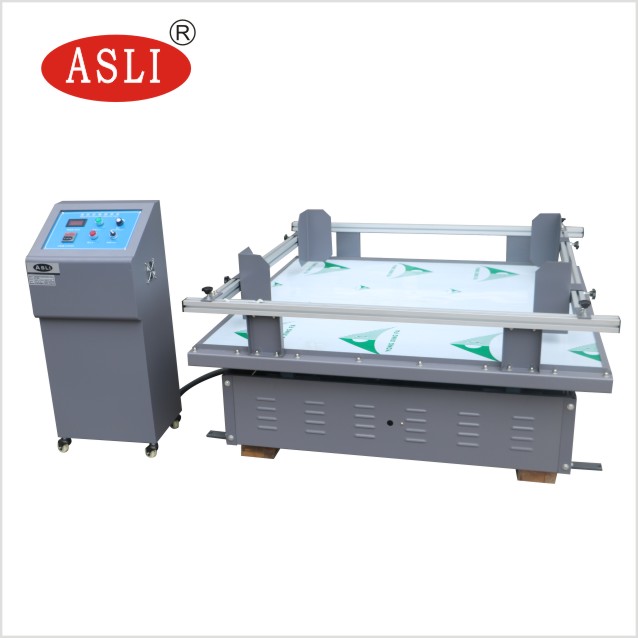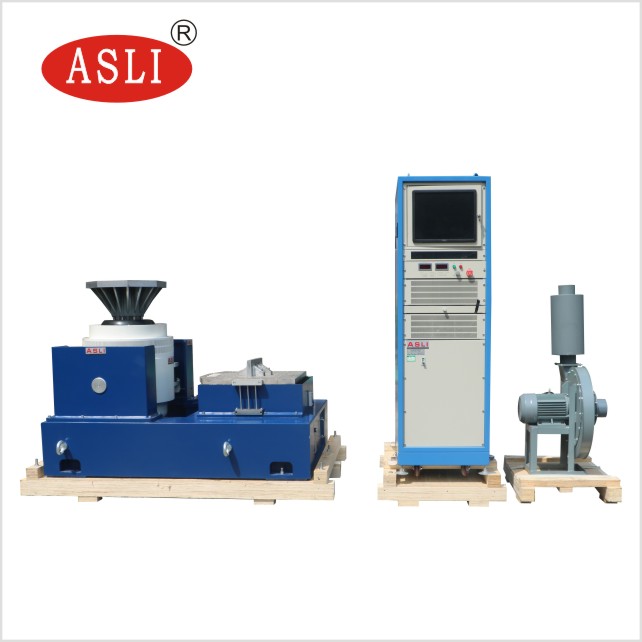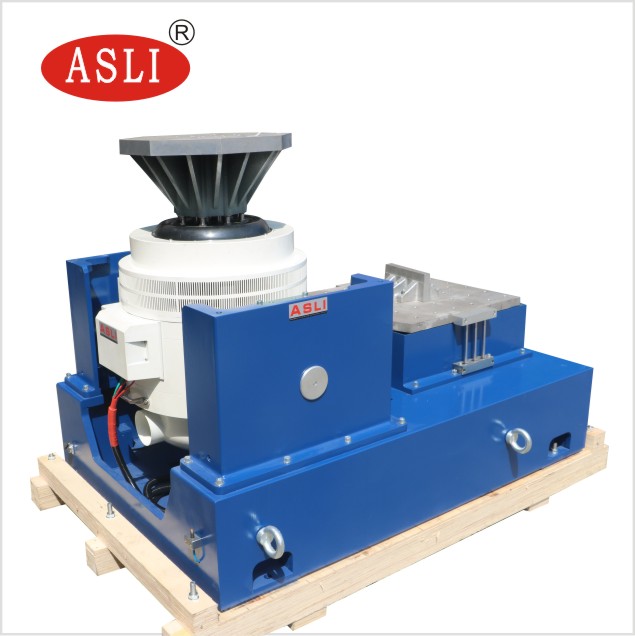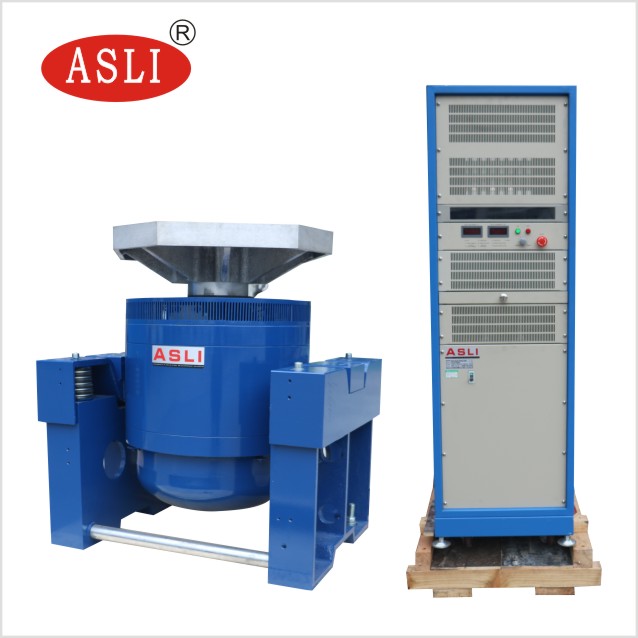Vibration testing, an essential procedure in the engineering domain, ensures that products can withstand the dynamic environments they will encounter during their lifecycle. From aerospace components to automotive assemblies, understanding the robustness and endurance of materials under various vibration scenarios is critical. This guide will dissect the principal methodologies—from sinusoidal to random and shock testing—and illustrate the intricate process of setting up and interpreting the results of these tests. We will also explore the advances in testing equipment and techniques that have refined our ability to simulate and analyze real-world conditions. The question remains: how can engineers optimize these tests to yield the most insightful and actionable data?
Vibration testing operates by analyzing mechanical oscillations either through time domain or frequency domain methods to assess system performance and detect abnormalities. This form of vibration analysis is integral to ensuring reliability and safety in various engineering applications. By employing vibration measurement, experts can identify discrepancies in frequency response that could indicate potential failures or inefficiencies within the system.
In the realm of vibration control, understanding how vibrations are transmitted and received across different mediums allows for the implementation of effective vibration isolation strategies. This is crucial in environments where precision is paramount, as even slight deviations caused by unwanted vibrations can lead to significant impacts on performance and longevity.
Frequency domain analysis, in particular, offers a granular view of how a system behaves under various conditions by breaking down vibrations into their constituent frequencies. This detailed insight facilitates targeted interventions that can enhance system robustness, optimize performance, and extend the operational lifespan of equipment.

ASLI STA 1A 2A ASTM D999 Simulated Transport Vibration Tester
Vibration testing is a critical process in assessing the durability and performance of components under varied stress conditions.
The methods for this testing vary, including Sinusoidal Vibration Testing, Random Vibration Testing, and Shock Testing, each tailored to simulate different real-world scenarios.
Additionally, more complex tests such as Sine on Random Testing and Combined Environmental Testing provide insights into how materials behave under combined or variable conditions.
Sinusoidal vibration testing, the most traditional form of assessing vibratory impacts, involves applying linear, predictable vibrations to evaluate the durability and performance of a product. This method precisely controls the frequency response, damping coefficient, and acceleration levels, making it ideal for pinpointing the structural integrity and operational thresholds of components under controlled, repeatable test conditions.
By applying a single focused tone, engineers can determine the natural frequencies of a product, which are critical for anticipating potential failures. Alternatively, sweeping the vibration across a range of frequencies allows for a comprehensive vibration analysis. This sweep helps in identifying resonance frequencies where the amplitude of vibrations might significantly increase, potentially leading to structural damage if not properly managed.
The precision of sinusoidal testing facilitates a deep understanding of how products will perform under specific, recurring conditions. It helps in fine-tuning designs to enhance durability, ensuring that each component can withstand expected operational stresses. Although it doesn't replicate complex real-world vibrations, its controlled setting provides invaluable data on how a product responds to known challenges, thus enabling designers to fortify products against predictable failures. This approach is particularly beneficial for items intended for environments where conditions are well-defined and not prone to unpredictability.
While sinusoidal vibration testing provides a controlled assessment of product durability under specific frequencies, random vibration testing introduces a broader spectrum of unpredictable and realistic stress scenarios. This method is critical for evaluating how products will perform under the chaotic influence of environmental factors such as road irregularities or turbulent skies.
Random vibration testing employs sophisticated testing equipment designed to deliver and measure a wide range of vibrational inputs. The process utilizes a vibration controller to generate random waveforms, ensuring a comprehensive vibration analysis. This approach not only tests the product's endurance but also assists in failure analysis by identifying potential weaknesses before actual deployment.
The data interpretation from these tests ensures manufacturers have the necessary information to enhance product reliability and safety. This is particularly vital for high-risk products in the automotive, aerospace, and military industries, where performance under unpredictable conditions can be a matter of life or death.
| Aspect | Description | Importance |
|---|---|---|
| Vibration Analysis | Evaluates response to random frequencies and amplitudes. | Critical for predicting product behavior |
| Environmental Factors | Simulates real-world conditions like transport or operation. | Ensures robustness against typical stresses |
| Testing Equipment | Uses shakers and controllers for diverse inputs. | Provides precision in testing scenarios |
Shock testing, a critical method of vibration testing, is indispensable for manufacturers and engineers aiming to ensure the durability and performance of products under sudden, high-impact conditions. This rigorous testing is crucial across various industries, notably in transportation, military, and consumer goods sectors, where mechanical shocks are frequent.
By simulating real-world impacts, such as drops and crashes, shock testing helps in verifying the resilience of products ranging from electronic devices and glassware to military equipment and automotive safety systems. The process involves subjecting a product to controlled high-acceleration impulses using specialized machinery like shock machines or multi-purpose electro-dynamic shakers.
These tests are meticulously designed to replicate specific shock profiles, including half sine, trapezoidal, and peak shocks, ensuring products meet stringent safety and durability standards.
Best For: Manufacturers and engineers who need to ensure their products can withstand harsh mechanical shocks in transportation, military, and consumer goods industries.
Pros:
Cons:
Sine on Random Testing combines steady-state and unpredictable vibration inputs to more closely mimic real-world environmental conditions. This methodology is pivotal in assessing the robustness and reliability of products subjected to both periodic and random disturbances. By superimposing sine tones on a random vibration background, engineers can create complex vibration profiles that replicate a variety of real-world scenarios. This dual-input approach provides a comprehensive examination of a product's frequency response and structural integrity under mixed-vibration environments.
In Sine on Random Testing, the test specimen is subjected to predefined sine waves, which are overlaid on a background of random vibrations. This random superposition ensures that the test conditions are not overly predictable, thus enhancing the test's relevance to actual operating conditions. The acceleration levels and frequency of the sine wave are meticulously controlled to target specific resonance points and assess the specimen's response.
Building on the concept of Sine on Random Testing, Combined Environmental Testing further expands the scope by integrating multiple environmental factors with vibration analysis to simulate even more complex real-world conditions. This method encompasses not only the dynamic vibration loads but also includes temperature variation and humidity control to evaluate how materials and systems perform under combined stresses that mimic operational environments.
By controlling these parameters, engineers can create more accurate acceleration profiles, which are crucial for understanding how different forces interact to affect product durability and functionality.
The precise manipulation of environmental factors alongside vibration inputs allows for a comprehensive assessment of product resilience, highlighting potential weaknesses in design before they become costly failures in deployment.
Moreover, the inclusion of fatigue analysis within this testing framework provides essential data on how repeated stress and environmental changes impact the longevity and reliability of components. This holistic approach ensures that all possible failure modes are considered, reducing the risks of unexpected performance degradation in critical applications.
Therefore, Combined Environmental Testing represents a pivotal strategy in the rigorous evaluation of products destined for challenging operational conditions, offering superior control over product performance and lifecycle.
Resonance Search and Dwell Testing is a critical method in vibration testing that aims to identify and evaluate a product's response to its resonant frequencies. This technique is pivotal in resonance analysis, focusing particularly on the frequency exploration across a spectrum to pinpoint where the product exhibits significant vibration response. This method is not only about identifying these critical points but also involves dwell evaluation where the frequency is maintained to study the potential impacts on product durability.
In practical applications, whether in aerospace or structural engineering, this testing method involves conducting a low-level sine sweep across a defined frequency range. The objective is to detect the frequencies at which the product resonates.
Once these resonant frequencies are identified, a fixed frequency dwell test is implemented. During this phase, the frequency is held constant to assess how the structure withstands prolonged exposure to its resonant frequency, which is critical for predicting potential failure points due to material fatigue or inherent weaknesses.
This testing ensures that products are capable of enduring resonant vibrations, which could otherwise lead to catastrophic failures, especially in critical applications like aircraft components and key structural elements in construction.
Various tools and techniques are essential for effective vibration testing, including accelerometers, load cells, torque cells, and strain gauges. Each instrument plays a crucial role in the precise measurement and analysis of vibrational forces, which are key to identifying potential failures and enhancing product designs.
Accelerometers are particularly valuable for capturing high-frequency vibrations, making them indispensable for frequency analysis. This analysis helps in understanding the vibrational characteristics that could lead to structural failures if not adequately controlled.
Data acquisition systems are vital in gathering data from these sensors during vibration tests. They ensure that all relevant vibrational data is accurately captured for further analysis.
Modal testing, another critical technique, utilizes the collected data to model how different structures respond to vibrations, aiding in predicting and mitigating potential issues before they lead to failure.
Calibration procedures are equally important, ensuring that all testing equipment operates correctly and provides reliable results. Regular calibration minimizes errors and maintains the integrity of the data collected.
Lastly, failure analysis uses the data to pinpoint the causes of past failures and to prevent future occurrences. This systematic approach allows for continuous improvement in product designs and the prevention of costly downtimes and repairs.

The process of vibration testing is systematically divided into three distinct phases:
Preparation: This phase involves setting up the testing equipment, defining the testing parameters, and ensuring that all necessary components are in place for the test to be conducted accurately.
Execution: In this phase, the actual vibration test is carried out according to the predefined parameters. The test is monitored closely to ensure that it is executed correctly and any deviations are noted for analysis.
Analysis: Once the test is completed, the data collected is analyzed to draw conclusions about the behavior of the tested object under vibration conditions. This analysis helps in evaluating the performance and reliability of the object.
Understanding these stages helps in achieving precise and actionable results from vibration tests.
In the preparation phase of vibration testing, we first define the specific objectives, including key parameters, test duration, and conditions. This stage is crucial for setting a clear roadmap for the subsequent testing process and ensures that all involved understand the goals and limits of the test.
Next, the selection of appropriate equipment is essential. Choices include various shakers, accelerometers, and data acquisition systems, each selected based on the unique requirements and characteristics of the specimen. This equipment selection is pivotal to accurately measuring the vibrations and achieving reliable data.
Fixture mounting is another critical element. The specimen must be securely attached to the test fixture to prevent any unintended movements or resonances that could skew results. This setup should faithfully represent the specimen's typical operating environment to ensure that the test outcomes are relevant and useful.
Additionally, careful consideration of specimen orientation is vital. Correct orientation affects the test results significantly, as it must mimic the realistic operational conditions the specimen will face. This realism in simulation is essential for the test to provide actionable insights and for the development of robust and durable products.
Upon completing the preparation phase, the execution phase of vibration testing begins with setting up the test equipment according to specified standards. This meticulous equipment setup process involves accurately placing and calibrating accelerometers, configuring the vibration shaker, and ensuring seamless connectivity with data acquisition systems. These steps are vital for achieving reliable test results and form the backbone of precise vibration analysis.
Once the equipment is ready, testing procedures commence with baseline measurements. These initial diagnostics are crucial to ascertain the inherent vibration levels and affirm the overall functionality of the setup. This phase of test validation ensures that all components are operating correctly before subjecting the specimen to specific vibration profiles.
Subsequently, the test specimen undergoes a series of controlled vibrations, employing profiles such as sinusoidal, random, or swept sine waves, depending on the test objectives. Throughout this process, rigorous data monitoring is conducted. Parameters such as vibration amplitude, frequency, and environmental factors like temperature are continuously recorded to maintain test integrity and reproducibility.
This constant vigilance in monitoring and adjusting test conditions as necessary is essential to uphold the standards of test validation and to ensure that the outcomes are both accurate and actionable.
Analyzing captured vibration data marks the commencement of the Analysis Phase in vibration testing, where engineers assess the dynamic response of the test specimen. This critical stage involves meticulous data interpretation to ensure accurate conclusions about the specimen's performance under various stress conditions.
Engineers focus on frequency analysis, identifying resonant frequencies that are crucial for understanding how the specimen behaves at different vibration levels. This phase also delves into the examination of mode shapes, which are essential for pinpointing the deformation patterns within the structure when subjected to vibrational forces.
Such analysis helps in predicting potential failure points and assessing the structural integrity of the specimen. Vibration signatures, unique to each specimen, are scrutinized to trace sources of anomalies and irregularities that could compromise performance.
Comparisons are then made against established acceptance criteria or relevant industry standards. This allows for a robust evaluation of whether the specimen meets the required durability and reliability metrics. Any deviations detected during this phase prompt further investigations or necessary corrective actions to refine the design or enhance the material properties, ensuring the specimen's resilience and functionality in its operational environment.



Selecting the appropriate tool for vibration testing hinges on a clear understanding of your project's specific requirements and objectives. The initial step in tool selection involves a rigorous criteria evaluation that aligns with your testing goals.
Whether you are conducting durability assessments or identifying resonances, the equipment chosen must directly support these objectives.
Equipment comparison should not only focus on features but also on how well these features match the type of vibration test—be it sinusoidal, random, shock, or combined environmental testing. Each method has unique demands, requiring specific tools like shakers, controllers, or multi-axis systems that can accurately simulate the required conditions.
A thorough technical specifications evaluation is crucial. This includes checking the frequency range, amplitude capacity, and data acquisition capabilities of each tool. Ensure that the selected equipment can handle your test sample's size, weight, and expected vibration levels without compromise.
Usability assessment also plays a vital role. Opt for tools that offer user-friendly interfaces and advanced analysis features. Additionally, compliance with industry standards and robust customer support are essential considerations to ensure efficient operation and reliable results in your vibration testing endeavors.
Safety measures are paramount during vibration testing, involving rigorous risk assessments, adherence to equipment requirements, and strict testing procedures. Effective data analysis further ensures the control and mitigation of potential hazards.
Vibration testing, a cornerstone in failure analysis, forecasts product lifespan by assessing frequency response, acceleration levels, and endurance limits, enhancing reliability testing and ensuring control over a product's battle against time and stress.
The frequency of vibration testing should align with testing standards and depend on factors like equipment maintenance schedules, criticality of components, and previous data analysis for optimal results interpretation and operational control.
Environmental factors significantly influence vibration testing outcomes. Temperature variations, humidity levels, altitude changes, air pressure, and ground conditions can all subtly shift the precision of results, necessitating meticulous control for accurate and reliable assessments.
The costs associated with vibration testing include equipment expenses, labor costs, material fees, analysis expenses, and maintenance fees. Effective budgeting in these areas ensures control over the financial aspects of testing processes.
In conclusion, the art of vibration testing is akin to tuning a complex musical instrument, striving for harmony within structural capabilities.
By leveraging appropriate methods—sinusoidal, random, shock, Sine on Random, and resonance search and dwell testing—engineers orchestrate a symphony of forces to uncover potential weaknesses.
This meticulous process ensures that each component performs reliably under stress, thereby safeguarding product integrity and enhancing user safety in a dynamic and unpredictable world.
Founded in 1988, ASLI (China) Test Equipment Co., Ltd. produces high-quality inspection instruments and testing equipment, including temperature and humidity chambers, aging testers, and vibration testers. Certified to international standards, ASLI serves research, quality inspection, and educational sectors worldwide, renowned for precision, reliability, and exceptional customer service.


[…] Related Article: How to Test Vibration: Comprehensive Guide to Methods and Process […]
[…] and performance of materials and products. Central to the functioning of these systems is vibration analysis, which involves measuring and assessing vibration levels to ensure they meet the test […]